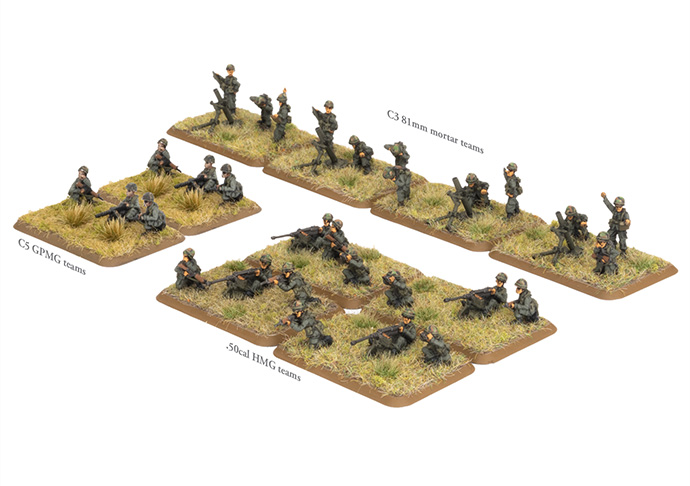|
|
Airborne Weapons Group (x24 Figs) (TCA714)
|
Since its inception in 1949, NATO has been a community of free nations brought together with a common goal, to defend the freedom of Western Europe and North America. To do this Canada, France, Netherlands, and Belgium deploy armoured and mechanised forces in West Germany. Old allies have also been called on, and an ANZAC Brigade of Australian and New Zealand troops have answered the call to fight....
|
 |
| The Canadians decided, as Soviet doctrine was to use waves of infantry and armoured vehicles to overcome opposition, that the .50 cal HMG could be used dismounted against both infantry and their lightly armoured personnel carriers as part of a defensive position. In the case of the Airborne Regiment, where they did not have armoured vehicles armed with similar weapons, a complement of tripod-mounted .50 cal heavy machine-guns was added to the weapons available to the airborne commandos. The Canadian Airborne Regiment also had a platoon of eight C3 81mm mortars. |
 |
|
| C3 81mm Mortar Team |
|

|
| .50cal HMG Team |
 |
| C5 GPMG Team |
|

|
Last Updated On Thursday, October 12, 2023 by Ryan Smith
|
|